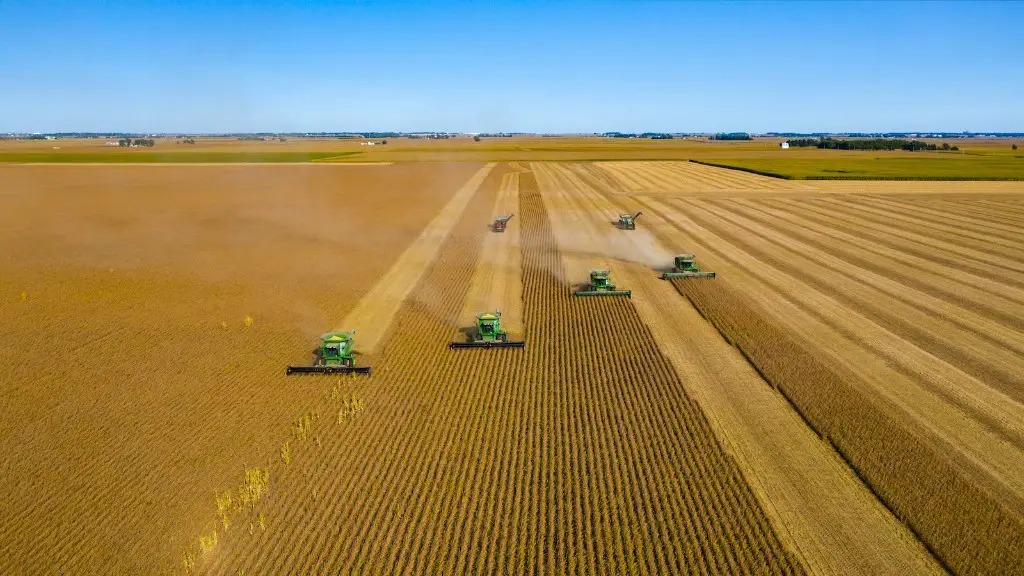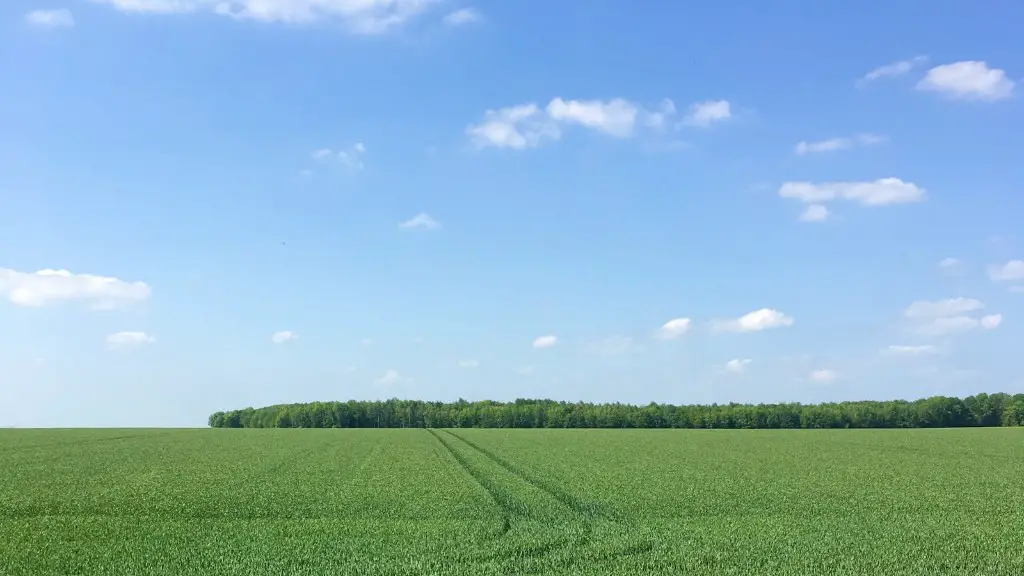Agriculture is one of the leading contributors to global greenhouse gas (GHG) emissions. In fact, the sector’s emissions account for roughly 20% of global emissions. While the exact figure varies, methane and nitrous oxide produced by agricultural activities are the two main components of agricultural GHG emissions.
Methane is produced through the livestock sector, with more than half of the sector’s emissions coming from livestock digestive processes. Other sources of this potent GHG include abandoned rice fields, burning biomass and manure management. Nitrous oxide is emitted from soil due to intensive or inefficient fertiliser use, and is also released through the use of fossil fuels for agricultural machines and vehicles.
In addition to methane and nitrous oxide, other GHGs contributing to agricultural emissions include carbon dioxide, hydrofluorocarbons, perfluorocarbons, and sulfur hexafluoride. Of these, carbon dioxide is the most abundant, accounting for around 75% of total agricultural GHG emissions. This is largely due to the emissions produced by motorised vehicles, as well as the burning of fossil fuels to power irrigation systems.
However, not all agricultural activities are equal when it comes to their emissions. Industrialised farms are responsible for much higher GHG emissions than smallholder family farms. Industrialised farms also have a greater effect on land-use change, which causes additional emissions.
The amount of GHG emissions from agriculture is dependent on several factors, such as the type of soil and the intensity of fertiliseruse, as well as land management practices. For example, conservation agriculture can help to mitigate GHG emissions, as it limits soil erosion, increases water retention and improves soil fertility.
Another way to reduce agricultural GHG emissions is by reducing livestock production and implementing farmed animal welfare standards, as well as practices such as crop rotation, agro-forestry, and using biodegradable materials to reduce plastic usage and waste.
In terms of policy approaches, many governments are introducing measures to reduce agriculture-related GHG emissions. Examples include direct subsidies for green technologies and sustainable practices, encouraging the adoption of renewable energies to power irrigation systems, and encouraging the use of manure management systems. By implementing these measures, agricultural GHG emissions can be reduced significantly.
GHG Reduction
Reducing agricultural GHG emissions is an essential part of mitigating climate change. It is estimated that reducing agricultural emissions by 25% between 2020 and 2030 could avoid nearly 0.5°C of global warming. To achieve this ambitious goal, it is essential that governments, scientists, and civil society come together to create effective policies.
The use of renewable energy sources such as solar and wind power can play an important role in reducing agricultural GHG emissions. Renewable energy sources can be used to power irrigation systems and other farm machinery, replacing the fossil fuels used currently. Additionally, renewable energy sources can also be utilised for the transportation of food and other agricultural products.
Since land usage has a major impact on GHG emissions, policies that favour conservation agriculture need to be implemented. Conservation agriculture involves the use of innovative farming techniques, such as reduced tillage, crop rotation, and agroforestry, which can all help to reduce soil erosion and improve soil fertility. By using these practices, farmers can produce crops with minimal environmental drawbacks.
The meat production industry is also responsible for a significant portion of agricultural GHG emissions. Therefore, sustainable livestock management should be implemented in order to reduce emissions. This includes reducing the amount of animals being bred, setting minimum animal welfare and safety standards, and implementing manure management systems.
Reducing agricultural GHG emissions is a complex challenge, but with the right policies, the sector can make a significant contribution to climate change mitigation.
GHG Offsets
In addition to reducing GHG emissions, agriculture can also help to offset emissions through carbon sequestration. This is the process of storing carbon dioxide in soil, biomass, and other forms. By sequestering carbon, agricultural activities can help to reduce atmospheric CO2 concentrations.
One way to undertake carbon sequestration is through the use of agroforestry. This is the practice of incorporating trees into agricultural systems, which helps to improve soil fertility and reduce soil erosion. It also increases the amount of carbon that is held in biomass and soil.
Another method of carbon sequestration is through the use of cover crops. These are crops grown with the specific aim of capturing carbon in the soil rather than being harvested. Cover crops not only increase soil fertility and reduce erosion, but they also absorb more carbon than conventional crops.
In addition to agroforestry and cover crops, other carbon sequestration practices can be implemented. These include no-till or low-till methods of farming, applying compost to soil, and using mulch to help keep CO2 in the soil.
GHG Mitigation
Agriculture not only has the potential to help reduce GHG emissions and offset atmospheric CO2, but can also help to mitigate the impacts of climate change. As climate change progresses, extreme weather events, such as droughts and floods, are becoming more and more frequent.
To combat these extreme weather events, resilient agricultural practices can be adopted. This includes drought-tolerant crops, such as sorghum and millet, water-efficient irrigation systems, and the use of cover crops to conserve and hold onto soil moisture during dry periods.
Agroforestry and silvopasture systems have also been proven to help reduce the impacts of climate change. Agroforestry involves the integration of trees into cropland to enhance productivity and soil health, reduce erosion, and increase water retention and drought resilience. Silvopasture involves integrating trees, pastures, and animals together into a single system, which has been shown to reduce water stress and increases drought resilience.
GHG Adaptation
Climate change adaptation is essential in order to ensure the long-term sustainability of agriculture. This includes practices such as diversifying crops, providing shade for livestock, and adapting irrigation systems to ensure water efficiency.
The use of drought-tolerant crops is one of the most important adaptation measures for agricultural practices. Drought-tolerant crops, such as sorghum and millet, can be grown even in areas affected by periods of drought or extended dry weather.
Growing nitrogen-fixing crops is also an effective way to adapt to climate change. These crops, such as legumes, fix nitrogen in the soil, enabling other crops to grow during times of drought. They also fix atmospheric nitrogen, which reduces the need for fertilizer.
GHG Financing
In addition to reducing emissions, offsetting emissions, and adapting to climate change, it is also essential that proper financing is provided in order to incentivise sustainable practices. Many governments have introduced various grants and subsidies that are designed to help farmers reduce emissions and adopt more sustainable practices.
However, more needs to be done in order to ensure that sustainable agricultural practices are adopted on a large scale. This includes the use of carbon pricing mechanisms, such as taxes, to incentivise the adoption of low-emission methods, as well as increased public funding for sustainable practices.
Public-private partnerships (PPPs) also offer a potential solution. These are partnerships between private industry, government, and civil society organisations, in which private entities contribute funds for low-emission initiatives. This helps to fill the financing gap and ensures that sustainable practices get the financial support they need.
Finally, international donors, such as the World Bank, can also provide financial support for projects aimed at reducing emissions and improving agricultural productivity. Donors can provide funds to help farmers adopt sustainable practices, as well as finance the development of innovative technologies to reduce emissions.
GHG Education
To ensure the long-term sustainability of agricultural practices, education should be provided in order to inform farmers and the general public of the impacts of agriculture on climate change. This includes educating the public on the links between agriculture and climate change, and providing farmers with the necessary knowledge and tools to implement sustainable practices.
Education programmes should also focus on the links between sustainable land management and climate change adaptation. Additionally, these programmes should be tailored to the local context in order to ensure that the methods used are appropriate for the area.
In addition to education, financial incentives should also be provided to farmers who adopt sustainable practices, such as the provision of subsidies for low-emission technologies and renewable energy sources. This can help to ensure that sustainable practices are adopted on a large scale.
Finally, the role of governments should be emphasised and encouraged in order to ensure that the necessary policies and regulations are in place. This can include the introduction of carbon pricing mechanisms, as well as subsidies and grants for low-emission products and services.
GHG Investment
Investing in agricultural projects that focus on reducing emissions can help to reduce the overall emissions of the sector. This can include investments in technologies such as renewable energy sources, as well as investments in more sustainable agricultural practices, such as agroforestry and silvopasture systems.
The provision of training and technical assistance should also be included in order to ensure that farmers are aware of the potential benefits of these practices and are able to implement them effectively. Additionally, financial incentives should be provided in order to incentivise the adoption of sustainable practices.
Furthermore, governments should be encouraged to provide the necessary regulatory and legal framework in order to ensure that the necessary tools and resources are in place in order to reduce emissions and adapt to climate change. Additionally, they should be encouraged to provide public funding for sustainable agricultural projects.
Finally, public-private partnerships (PPPs) should be established in order to finance agricultural projects that focus on emissions reduction and climate adaptation. This can help to ensure that the necessary resources are available to farmers and entrepreneurs in order to reduce emissions and improve agricultural productivity.


